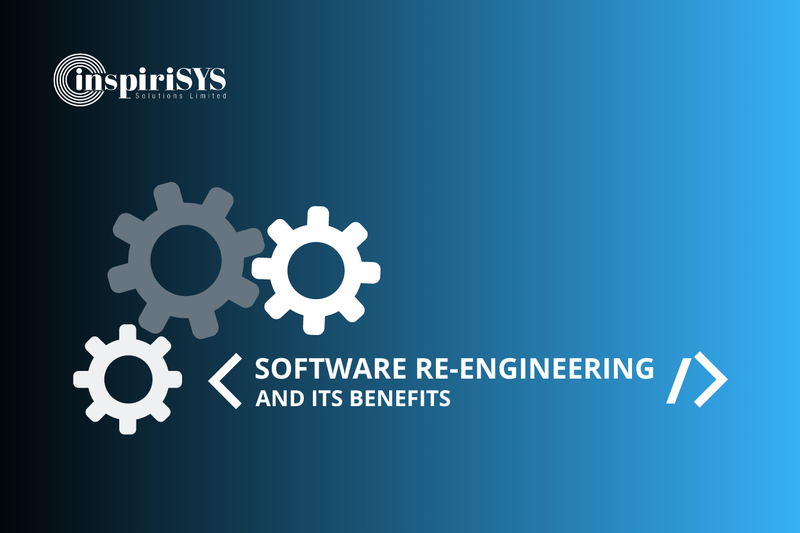The world is changing every day. Businesses have started to gain pace with the change. In this competitive world, refraining to transform is a direct path to the rusted garage. The software landscape is experiencing transformation every day. New platforms, new developments, new inventions are ruling the industry. For every tech update, the existing software becomes passé. An out-dated software can continue to work the same way it used to be. Nonetheless, updating the internal systems of the software helps to make it more efficient. This process of improving the efficiency and maintainability of an existing software system is called Software Re-Engineering.
A Misconception
It is obvious that every software development team is dedicated to engineering software with perfection. Many businesses are skeptical on the need for software re-engineering. They think that only software that is developed with flaws need improvements. Also, some believe that their software doesn’t need re-engineering. The benefits of software re-engineering are described below to break this misconception.
Benefits of Software Re-engineering
Experience Customer Experience
Any product or service can be reviewed only when it is being used. Of course, testing procedures meant to do that. But the real issues can only be perceived in real use cases. For instance, we had to manually enter OTPs on mobile payment apps. But when the phone is already unlocked, it must be with the owner. So auto-filling OTPs on corresponding fields won’t be a security issue. Mobile payment app developers re-engineered the codes to roll out this feature. Now the applications are effective and productive for users. This, in turn, improves customer experience.
Skyrocket Performance
Software Re-engineering involves code optimization. Consider a pair of the database query is called together often. It can be clamped so as to facilitate the database to work at its optimum level. System functionalities can be refined and flexibility can be increased. Most of the time, it’s not about correcting a software flaw. But, taking the software to the next level by optimizing the existing operations. It ensures better compliance with the enterprise’s current objectives. Also, it eases the systems to generate quick responses that favor the customers and developers to appreciate the environment.
The Risk Factor
Some businesses want their software to be built from scratch. It is not a bad idea to have a fresh start. But the affordability of risks comes with it, should be taken into concern. In every phase of software development, there will be a myriad risks in the name of bugs. They should be solved iteratively so as to provide the best customer experience. Then again, a single bug can dip the customer experience on the ground. Rather, making use of existing software is a worthy idea. It reduces the risk of bugs, since, the existing software had already gone through testing phases. Anyhow, the software will be re-engineered by optimizing the code and adding new features. Nonetheless, the risk involved in optimization and addition of new features is comparatively less than developing software from scratch.
Cut the Cost
Software is built iteratively. The initial software development phase involves building the core system functionalities like user management, payment systems, etc. Later the additional features like analytics and suggestion systems are added. The time & cost consuming process is, building the core systems. They are the base systems of software architecture. In software re-engineering, the core systems are already in its place and minor modifications have to be made at that level. So the cost of the entire software development project will be significantly less.
Summary
Reusability, maintainability, and portability are the attributes of good software. These attributes provide the best customer experience and ease the workflow of developers. On the other hand, software complexity is a major concern for developers and even for businesses. Well-Structured software is like a well-arranged bookshelf. It is easy to add more books if a bookshelf is in order. Likewise, structured software reduces the complexity and risk when a new feature has to be added. Software re-engineering plays a major role in mitigating the risk involved in software complexity. It not only ramps up the software performance but also reduces the cost significantly.
With extensive experience in software re-engineering, Inspirisys helps organizations to attain their business goals. We keep the core elements of the legacy software intact, optimize the performance and augment newly required functionalities. We adhere to the industry best practices of coding standards, design guidelines, and project management to provide the best software re-engineering solution.
Click here to talk to an expert.







